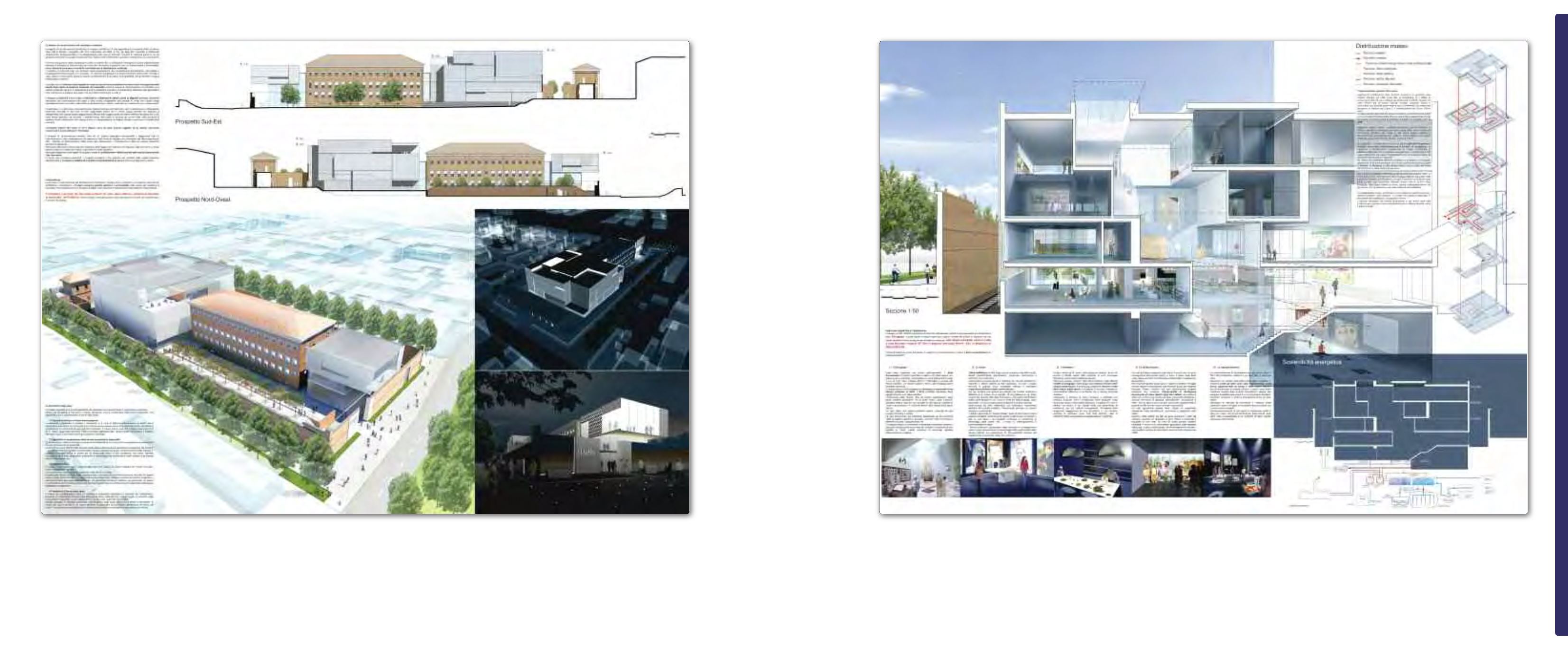
In this project the museum becomes a pla-
ce of learning through dialogue and mo-
tion, a “stroll” during which a dynamic mul-
tisensory experience takes place. The buil-
ding is shaped like a three dimensional Tal-
mud, a book to peruse, that unfolds a fa-
scinating exploration of traditions and
translations. It is as much the emblem of
the Jewish-Italian symbiosis as the funda-
mental text for all the Jews and printed in
its entirety in Italy for the first time. The Tal-
mud isn’t a linear book, but a column of
text surrounded by commentaries, which
in turn are surrounded by further com-
mentaries. With these insights, the project
proposes an evocative inversion, in which
the book becomes the city, and the pages
become the stones of a monument which
is not an idol or theatre of memories of the
past, but which projects towards the fu-
ture. The museum is arranged to give an
understanding of how the Italian Jews have
always been both Jewish and Italian, em-
bodying in themselves the principles, com-
pletely modern, that identity may be mul-
tiple and mutually fruitful and not neces-
sarily hostile and exclusive.
In questo progetto il museo diventa un
luogo della conoscenza attraverso il dia-
logo e il movimento, un “cammino” in cui
prende forma una esperienza dinamica e
multisensoriale.
L’edificio si presenta come un Talmud tri-
dimensionale, un libro da percorrere per
compiere un affascinante esercizio di tra-
dizione e traduzione, emblema della sim-
biosi ebraico-italiana in quanto testo
fondante per tutti gli ebrei e stampato in-
tegralmente per la prima volta in Italia.
Il Talmud non è un libro lineare, ma una
colonna di testo contornata da com-
menti, a loro volta circondati da altri com-
menti. Da questa intuizione, il progetto
propone una suggestiva inversione in cui
il libro si fa città, e la pagina si fa pietra in
un monumento che non sia idolo o teatro
della memoria rivolto al passato, ma che
si proietta verso il futuro.
L’allestimento museale aiuta a capire me-
glio come gli ebrei italiani siano stati sem-
pre ebrei ed italiani, incarnando in se
stessi il principio, assai moderno, che le
identità possono essere multiple e reci-
procamente feconde, e non necessaria-
mente conflittuali ed esclusive.


